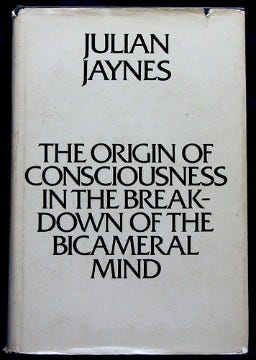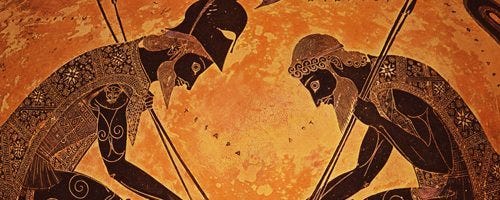The Relationship Between Schizophrenia and Religious Visions
The similarity between religious visions and the hallucinations of people with mental illness has long been noticed.
The similarity between religious visions and hallucinations and delusions of people with mental illness has long been known. Numerous mental conditions can produce mystical or spiritual experiences, including bipolar disorder, schizophrenia, and epilepsy. This focus here is on schizophrenia.
Schizophrenia is a complex, severe disorder that is far from fully understood. Symptoms include emotional blunting, social and socializing problems, difficulty “reading” people, cognitive problems and deterioration, disorganized speech and behavior, language problems, problems with working memory and self-awareness, a disconnect with standard perceptions of reality, and visual and auditory hallucinations
Schizophrenics often hallucinate commanding voices, voices that instruct them what to do. The voices are as sensorily real to them as when someone talks to you, and commanding voices are much like religious voices.

Schizophrenia involves certain cognitive areas of the brain that are damaged, underdeveloped or deteriorated. These are the cognitive areas that organize information and make our perceptions of time, geography, categories, identifications, and symbolic language. The perceptions are artificial but needed for normal function. With the cognitive areas suppressed or damaged, schizophrenics process information in a more emotional, right-brain way similar to what happens during mystical experiences.
In his seminal 1976 book The Origin of Consciousness in the Breakdown of the Bicameral Mind (Houghton Mifflin), Princeton University psychologist Julian Jaynes theorized that most mental illnesses are just early ways of thinking. He said schizophrenia is the way early people thought.
Jaynes said that schizophrenia is a vestige of early, pre-conscious human thinking. He said that the commanding voices schizophrenics hear were the early gods and that early people sensorily experienced “gods” and muses in sight and sound.
The cognitive and emotional parts work together to function, and the parts of the brain receive information or messages from other parts of the brain. Modern brains use the cognitive structuring that order, label, and process the right hemisphere messages to make sense of the “messages” they receive from other parts of the brain. Modern humans use and require these processes to have consciousness, or the ability to look at and try and understand their emotional responses and sensory information.
With modern brains, the proverbial right hemisphere emotional brain is much less dominant than it used to be, as the proverbial left hemisphere cognitive parts of the brain has gained more influence.
As early humans lacked advanced language, metaconscousness, autobiographical memory, and the capacity of executive ego functions, such as deliberate mind-wandering, introspection, mental control, and the ability to think about one’s thoughts, they thus received messages without the cognitive, conscious analysis. Humans thus received the messages from parts of their brain as direct vocal commands and took them as direct commands as gods.
Early people perceived and “heard” Gods and muses. Their brain was “talking” to itself, but they did not have the conscious ability to know it was their thoughts. Consciousness is often defined as thinking about one’s thoughts and being aware that they are one’s thoughts.
Jaynes writes that the Iliad and parts of the Old Testament were written by non-conscious people and that you can see that later parts of the Bible and the Odyssey were written by people who were gaining consciousness. He said there were so many gods in the old days because the gods were made by the people’s brains.
This schizophrenic way of thinking was useful and essential for social functioning and survival in the early days. He said early societies were higherarchial like bee colonies. This unconscious “follow commands” method of thinking and perception served well.
However, these societies and cultures were upheaved, including by natural disasters and migration, and human thinking had to evolve.
To adapt, human brains developed the cognitive structure and advanced language needed for consciousness, to adapt and consider. The proverbial intellectual left hemisphere became more dominant. As the cognitive structures and self-reflection developed, and as advanced and written language becomes more advanced, these religious visions and voices diminished or disappeared from most peoples’ and daily life.
The people noticed that their gods, once part of their daily sensory lives, were disappearing.
My god has forsaken me and disappeared,
My goddess has failed me and keeps at a distance
The benevolent angel who walked beside me has departed,
My protecting spirit has taken to flight and is seeking someone else.
— Anonymous Mesopetanian poet (700 BC)
Jaynes wrote that, as consciousness developed and the gods disappeared, humans felt that their gods had left them. They developed religious practices and leaders in an attempt to “bring back the gods.” Religious practices such as meditation, Gregorian chants, Whirling Dervish and Sun Dances, meditation, and prayer alter how the mind functions by suppressing parts of the brain. They bring us back to early thinking.
Shamanic and similar mystics were people whose brains worked in the old way, and societies used them as conduits to the gods. Before their brains developed, children were known to be more prevalent to having religious visions.
Notice how the religious often say that bad thoughts or questioning dogma are sinful and go against God. That is the type of conscious thinking and reflecting that prevents musical experiences and “makes the gods go away.”
Schizophrenic Nobel Prize-winning mathematician John Nash said he got his hallucinations and delusions to go away by thinking about them logically and consciously dismissing them as hallucinations.
This all shows that human thinking, old and now, is about function in particular environments. It also shows that mental illnesses are ways of thinking useful and even essential in other, often past situations. The future and new situations may require different ways of thinking, perhaps old or mentally ill ways..
It also shows that human consciousness is produced by and perhaps requires artificial and arbitrary cognitive ways of thinking. Our consciousness is, and may necessarily always be, artificial, arbitrary and subjective, and, in that sense, false.
A medical school study for the Indian Journal of Psychiatry found that 99% of the schizophrenic patients in the study believed in God.
Schizophrenic delusions and hallucinations commonly have religious content. However, the delusions and interpretations of hallucinations were influenced by upbringing and culture. In Egypt, the prevalence of religious delusions fluctuated to changes in how much Islam was emphasized in the country The studies reveal culture can have a powerful influence on the types of delusions and hallucinations people experience.
Schizophrenics with no religious upbringing more commonly interpreted the voices as coming from family members or aliens, or have delusions that they are being persecuted by the government rather than the Devil.







Thanks for this very interesting article. You mention epilepsy at the beginning. Temporal lobe epilepsy has been found to correlate with "religiosity" and mystical experiences.